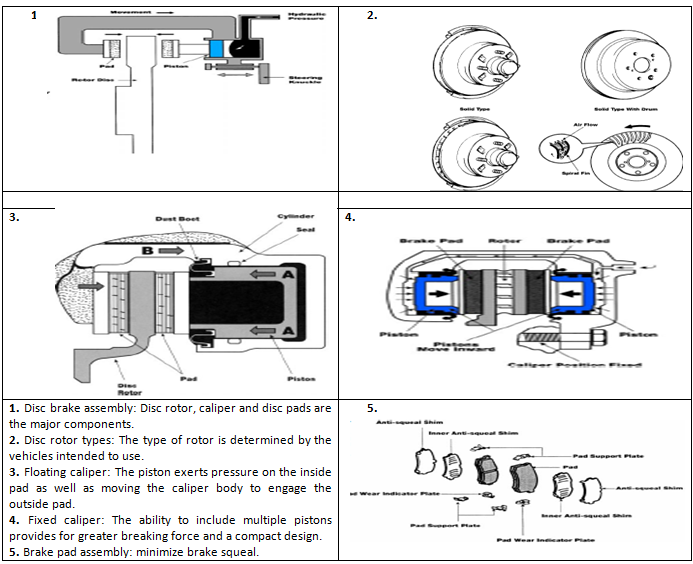←
Automobile Engineering
Disc Brakes
Introduction:
Unlike drum brakes, disc brakes have limited self-energizing action making it necessary to apply greater hydraulic pressure to obtain sufficient braking force. This is accomplished by increasing the size of caliper piston. The simple design facilitates easy maintenance and pad replacement.
Components of disc brakes:
A disc brake assembly consists of a:
- Cast-iron disc that rotates with the wheel.
- Caliper assembly attached to the steering knuckle.
- Friction materials that are mounted to the caliper assembly
Operation:
- When hydraulic pressure is applied to the caliper piston, it forces the inside pad to contact the disc.
- As pressure increases the caliper moves to the right and causes the outside pad to contact the disc.
- Braking force is generated by friction between the disc pads as they are squeezed against the rotor.
- Since disc brakes do not use friction between the lining and rotor to increase braking power as drum brakes do, they are less likely to cause a pull.
The friction surface is constantly exposed to the air, ensuring good heat dissipation, minimizing brake fade. It also allows for self-cleaning as dust and water are thrown off, reducing friction differences.
